So recently I made a decision that I should’ve made years ago, and that was to move in the direction palm hybridizing, specifically cocosoid hybrids. Primarily this type of palm hybrid is most common between Butia ordorata and Syagrus romanzoffiana, with the resulting offspring being known as the Mule palm, or Butiagrus.
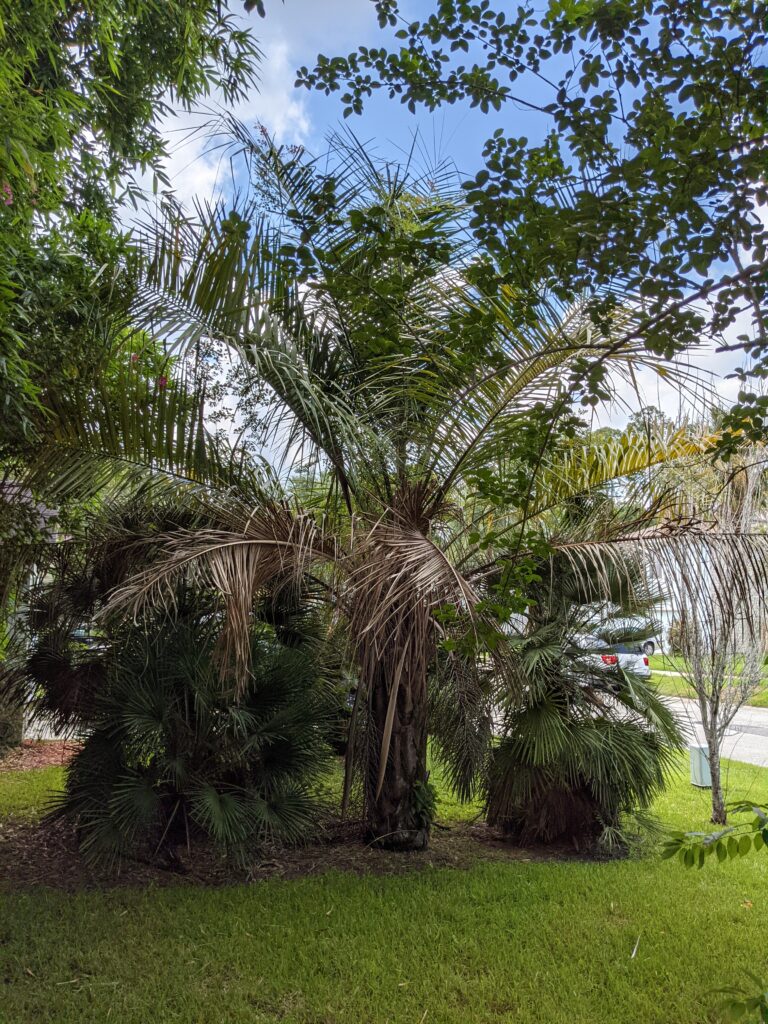
For years now I have been producing hybrid cycads with several varieties in the Cycas family, however, the market is variable on these. Additionally, being cycads are male.or female, they are not always coning at the same time so production can vary wildly.
So now my first problem was having my own mature Butia ordorata palm tree to produce the hybrids with. I have had one planted in my front yard for several years now, however, it just has not flowered yet. I also have several hybrid Butia trees planted in the back yard, but again, these are not flowering size. Then I remembered that potentially I had access to one or more, and I might just be able to get them if I could access them.
Sometime back in 2007/2008, my brother and I planted out a bunch of plans trees on his property in Central Florida. However, he later sold the property and I never had the chance to transplant any of the palms that we planted. (I focused on digging bamboo from the property as that was my obsession at the time). Thinking in this, I was certain the Butia ordorata would be mature enough to be producing seed. Thus I reached out to the current property owner and much to my surprise he said everything that was planted was still there and I could dig whatever I wanted!!!
So now it was time to transplant a palm tree or two from Central Florida to my home in Northeast Florida. With the help of my brother, we set out on the property to tackle this, with two shovels, a sawzall and a pickup. Upon arriving we were amazed at how well the palm trees had grown, especially with such little care. The Washington palms were untrimmed and displayed their beards proudly, and as I had hoped, we found several of the Butia ordorata palms to be fruiting!

After deciding which palms I wanted, we got to digging out the palms for transplant. Knowing that once I got the palms to my end I’d be handling them solo, I opted to dig just a few inches around the base of the palm and then out about a foot. Then we dug down about a foot and a half to two feet. Once that was done I took the sawzall with a ten inch blade and under cut the root mass to help free it up. Once that was completed the palm easily pushed over, “popping” out of the ground. My brother and I then rolled the palm up a set of make shift ramps and once in the back of the truck tied the fronds up for the eventual two and a half hour drive back to Northeast Florida.
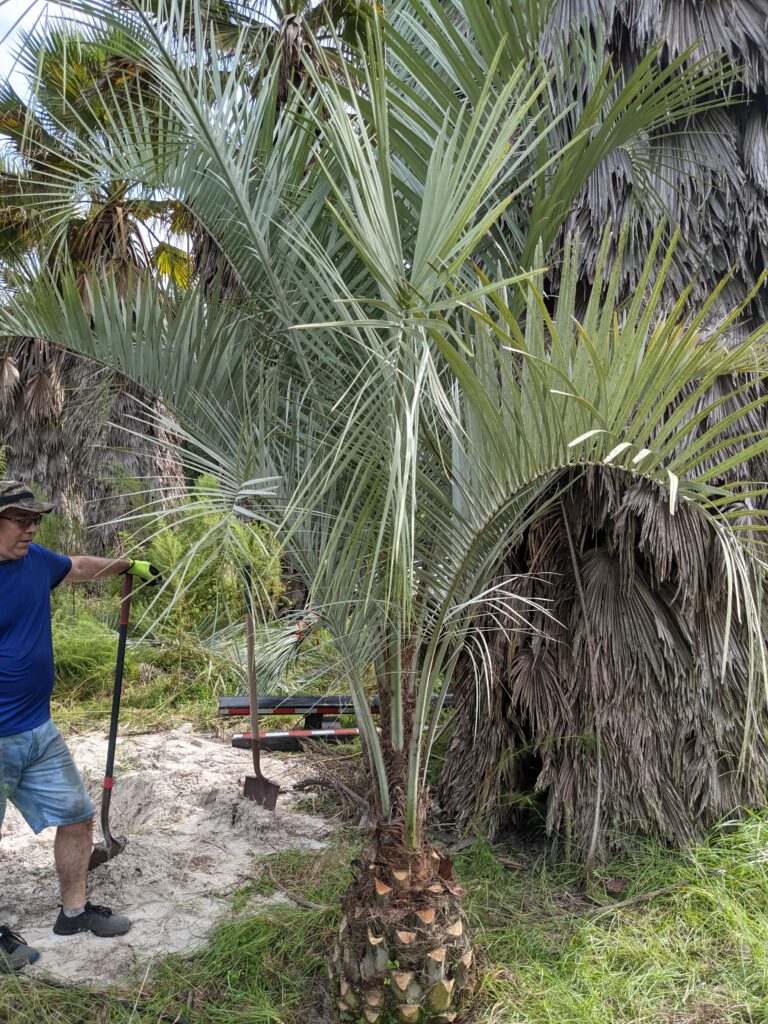
One of two Butia ordorata selected for transplant 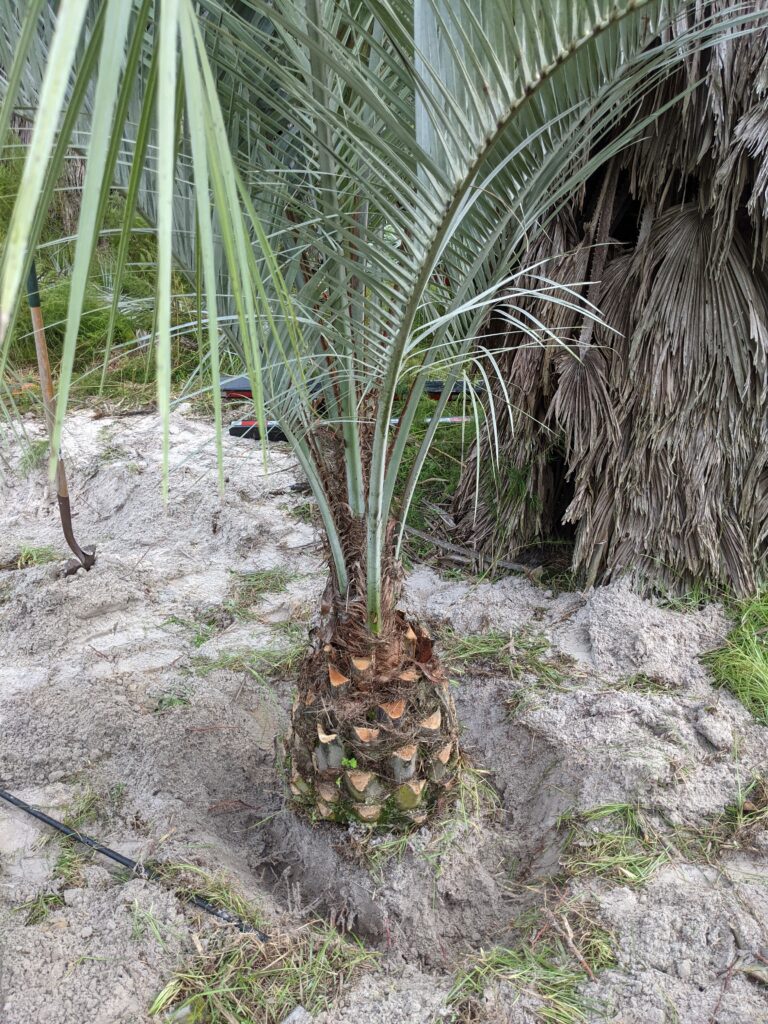
Butia ordorata trenched for removal 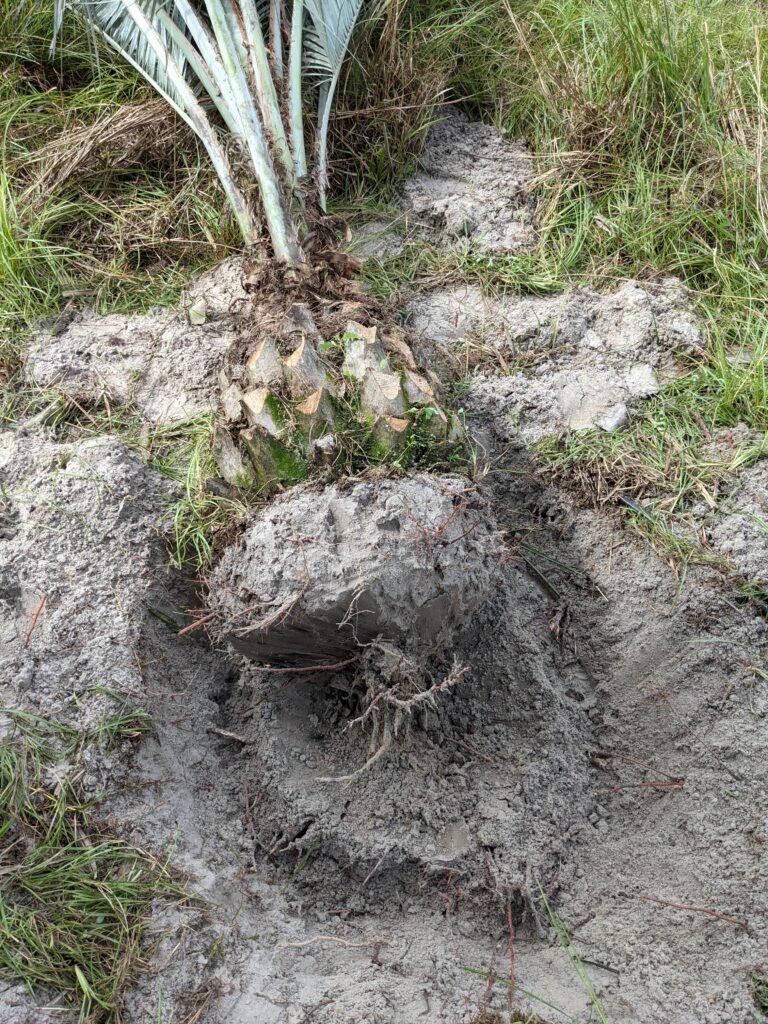
First palm tree popped out 
Second palm tree popped out 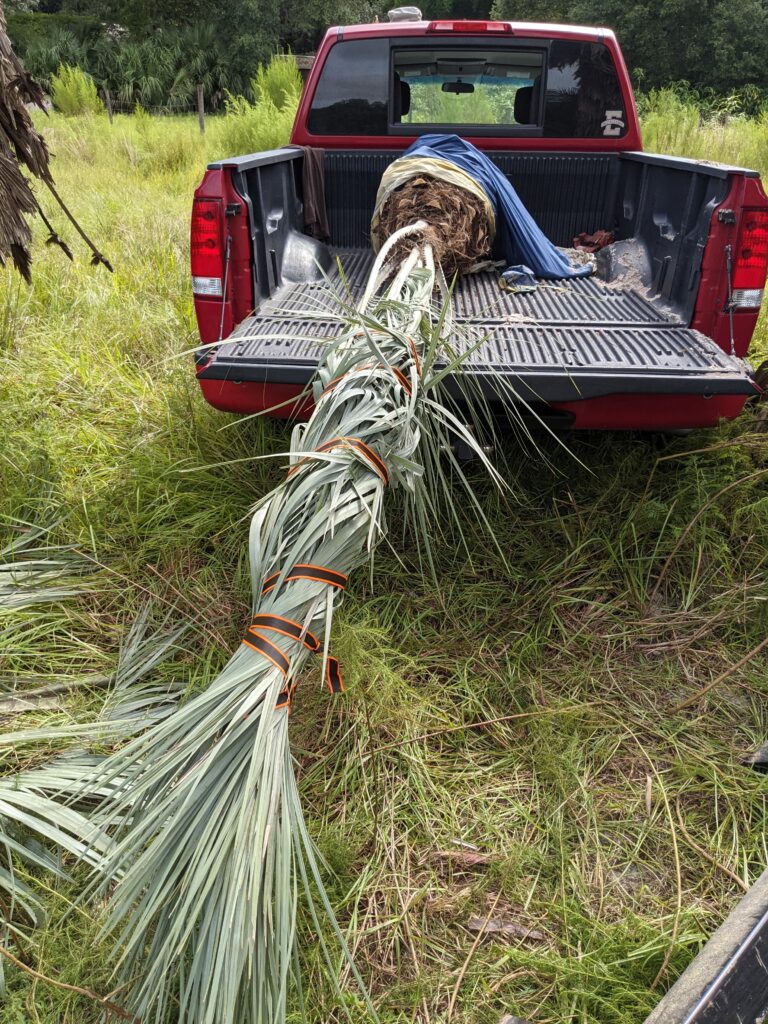
Palm tree loaded for transplant
After both palms were loaded, it was time to clean up and make the journey north. The drive back gave me a opportunity to think about how I was going to unload the palms and ultimately where they were going to be planted in my yard. I decided since it was just me I’d back up to my front porch since it was the same height as the tailgate when lowered. Once in position, I stood the palms up then used my hand dolly to move them from the truck to the porch. After that, the truck was moved out of the way and the palms relocated to the back yard. The process from here was simple…dig a hole much larger in diameter than the root ball but at the same depth that it was previously in the ground. Lay the palm on it’s side, roll it into the hole and stand it up. Water in as you backfill the hole to eliminate any air pockets, use the excess soil to build berm around the base to catch and retain water then keep it watered for the next 30 days or until you note new growth happening. I marked the current leaf petioles with a Sharpie to indicate where there were, since as they start growing the marks will separate.
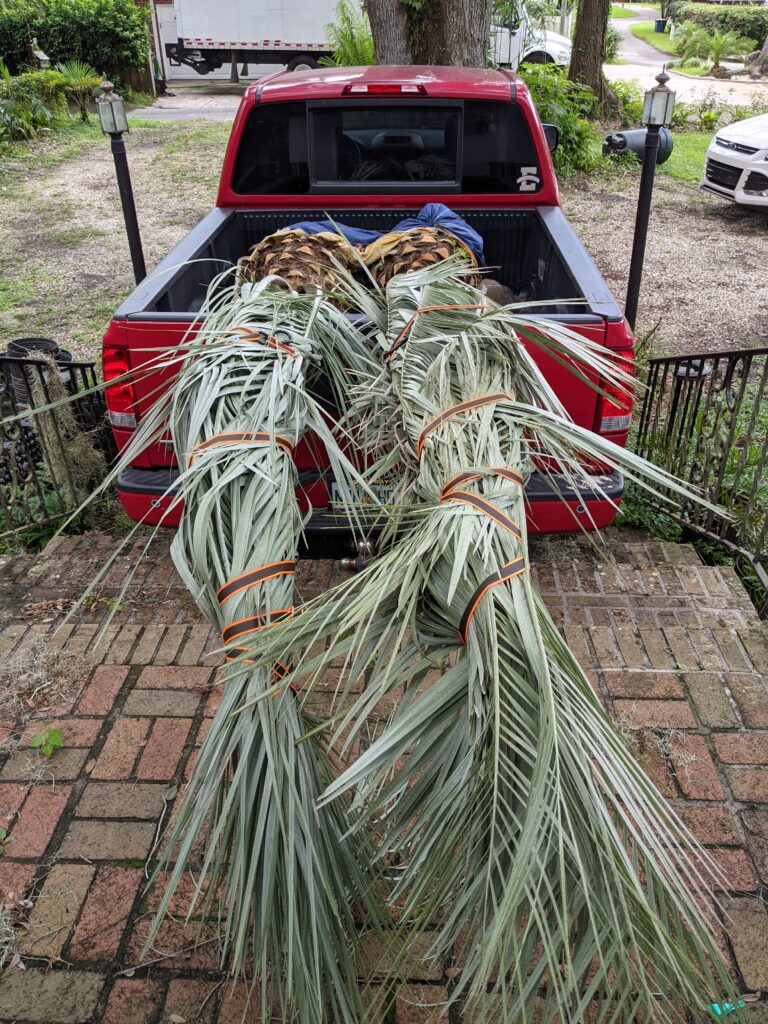
Palms ready to unload 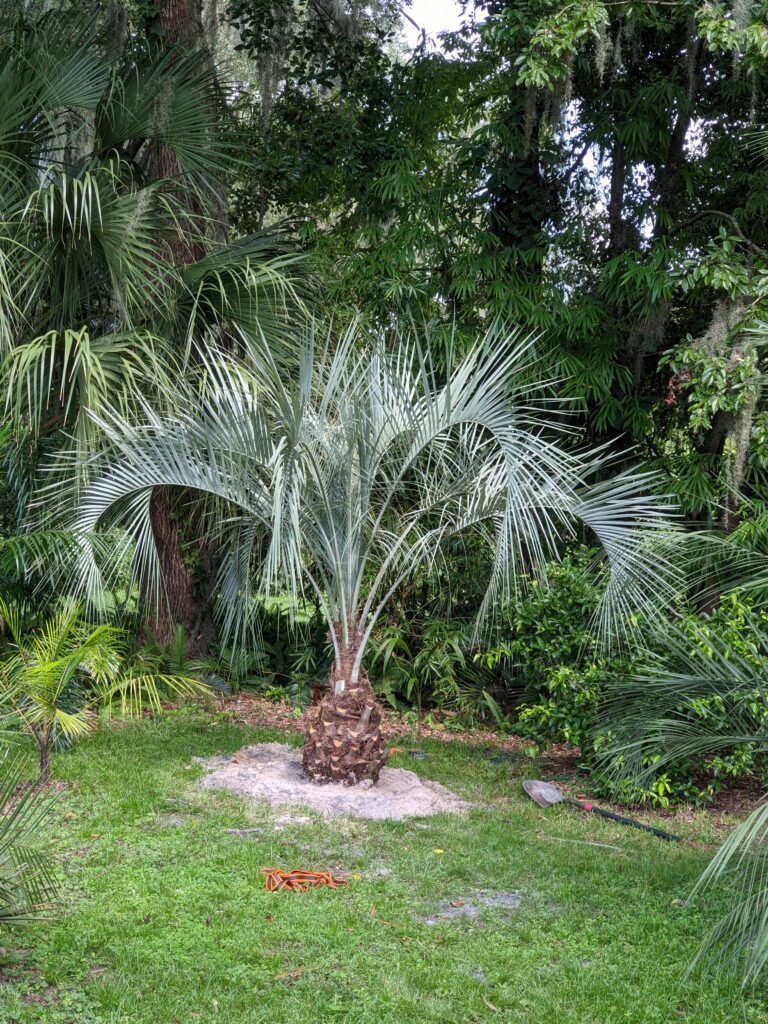
Palm #1 planted 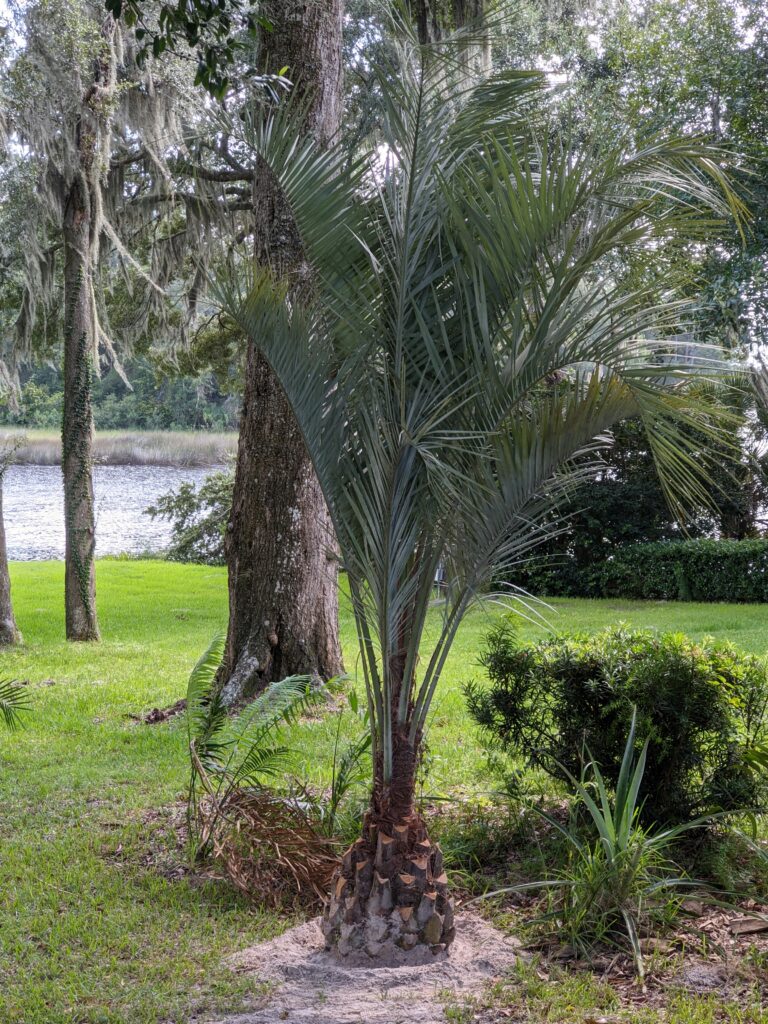
Palm #2 planted 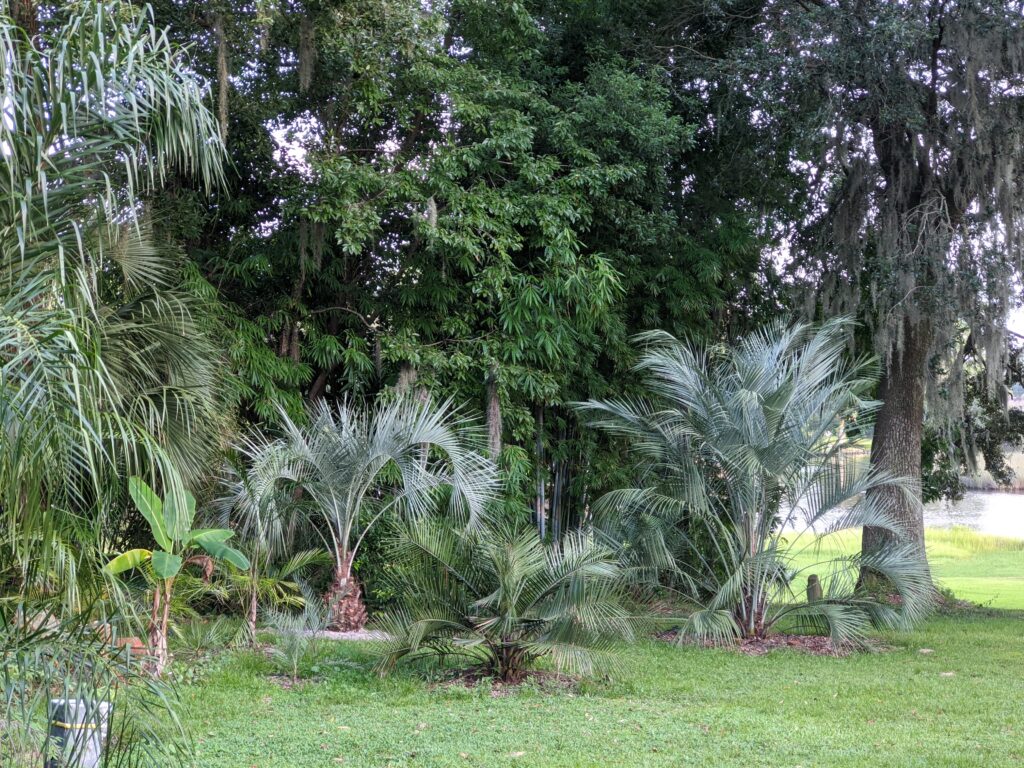
Some good looking palms!



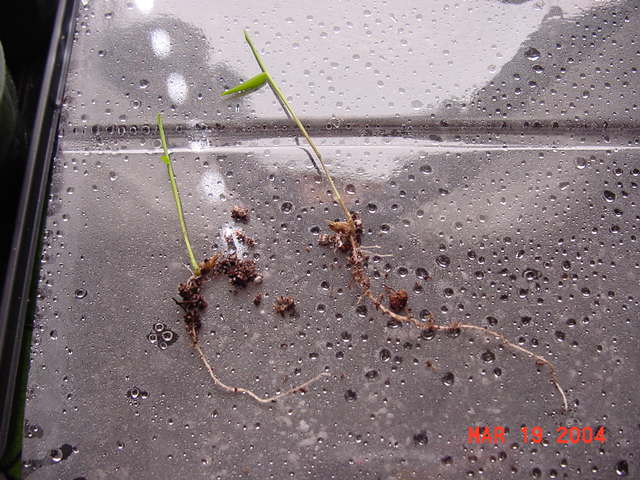
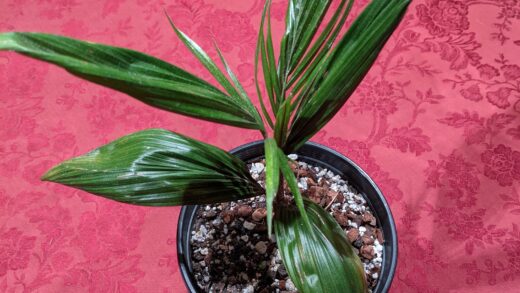
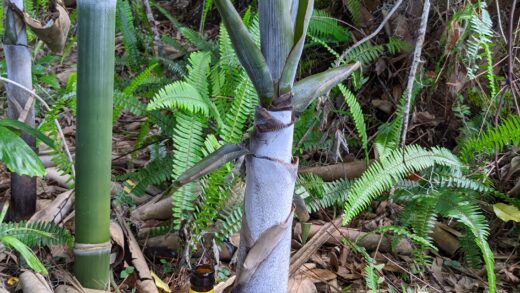
To help keep the palm’s rootball intact, the soil should be moistened before digging. Palmiers
Thanks for the additional info. Always a good idea where water is available, however, for many this may not be possible.